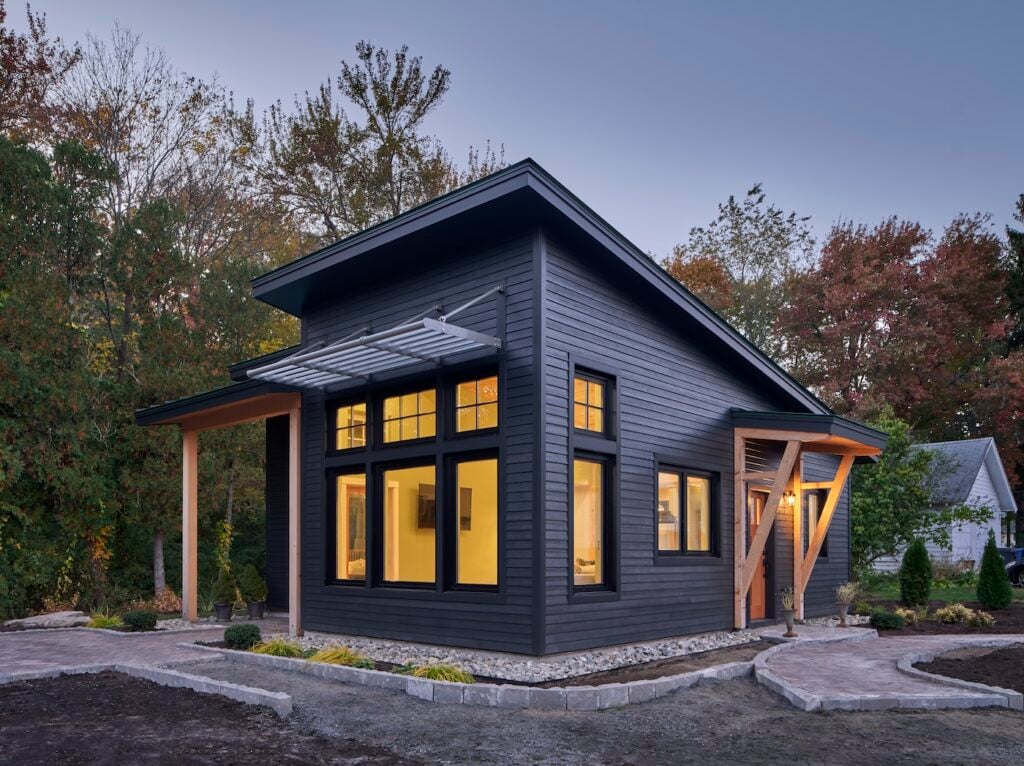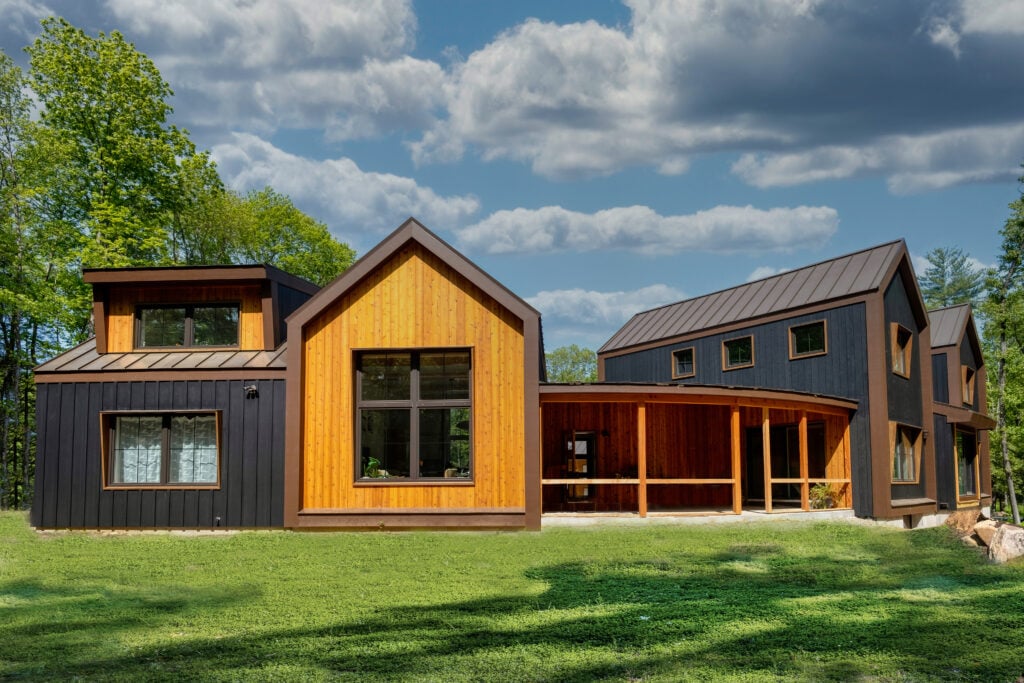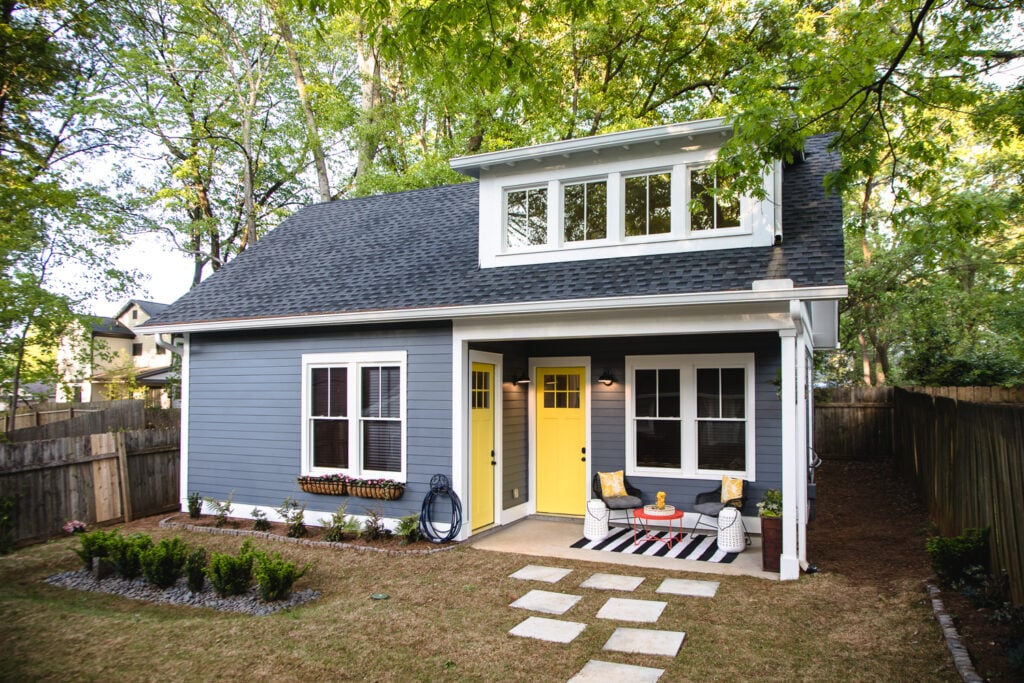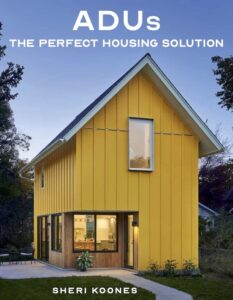Energy Efficient ADU Homes
ADU homes are gaining popularity and are quite possibly the perfect energy-efficient housing solution. Also known as “granny flats,” these ADU homes are built using green products, energy efficiency, space saving designs, and quality materials.

ADUs: The Perfect Housing Solution
The new book ADUs: The Perfect Housing Solution by Sheri Koones beautifully profiles 25 of the most beautiful, energy-efficient ADUs in North America. This book is laid out with photos and outlines many ideas for green, energy-efficient, and space-saving features that go into building an ADU home.
This book shows some of the most creative ways to build accessory dwelling units and how to make them feel larger than they are, whether a prefab ADU, built on-site, or a combination of the two.
Koones states that this is one of the most important residential housing topics today in North America. Currently, there are about 1.5 million ADUs in the US, and it’s a growing number with an increase of around 9% per year. That’s 135,000 new ADUs a year, so it’s safe to say many people are finding solutions with this growing trend!
In this book, Koones makes the usefulness, practicality, and beauty of energy efficient ADUs accessible and clear. It feels exciting, doable, and truly like a great solution for so many reasons.
What is an ADU?
ADU is an acronym for Accessory Dwelling Unit, and by definition, it is a unit with a full kitchen and bathroom that is an accessory to the main residential unit on the property.
It is also known as a granny flat, detached accessory dwelling unit, in-law suite, casita, or laneway house. It can be on a property with a home or an apartment building, as well as an attached unit with a separate entrance.
Each area has different regulations regarding ADUs. Check your local laws to find out how big an ADU home can be, how many can exist on one property, whether an owner must reside on the property, and any additional restrictions.
Reasons for ADU Homes
ADUs can serve many purposes, whether it’s a need for more space, additional income, or generational housing.
Here are a few reasons why ADUs are gaining popularity and traction:
- Housing shortage
- Affordable housing
- Increase the residential home’s value
- Growing aging population
- Multi-generational living
- Additional income
- Increased rental availability
- Working from home space

Photo courtesy of Jamie Wolf
ADU Home Drawbacks
One of the biggest disadvantages of having an ADU home as a permanent residence is the space limitation. There are some great ideas in the book on how to save space when designing an ADU, but when it comes down to it, most are pretty small and won’t house a large family.
People in some areas find the permit and approval process difficult, and some charge excessive fees. There can be restrictions for fear of added traffic, and changing the vibe of the neighborhood. These are all things to consider, but overall many areas are working with the community to make sure that the positives of an ADU outweigh the negatives.
Energy-Efficient, Green, and Space-Saving Options for ADUs
The thing I love the most about Sheri Koones’ book is the creative layout and easy to read outlines with beautiful photos showing lots of ideas for an eco-friendly ADU home.
You can learn more about the author Sheri Koones here and find her other books, publications, and speaking appearances.
It really brings the possibilities to life for someone considering building or buying a prefab ADU.
These are some, but not all, of my favorite features and options captured in ADUs: The Perfect Housing Solution.
ADU Home Green Features
Cork flooring is an environmentally friendly choice due to sustainable harvesting from the outer bark of cork oak trees, without harming them. Once it’s ground up, it is coated with a resin binder that is nontoxic. These floors don’t look like the cork board you might be thinking of, they can come in tiles, sheets, or strip flooring with a variety of colors and patterns. They provide comfort, are easy to install and clean, and are hypoallergenic.
A rain catchment system in one couple’s energy efficient ADU shows how make the most of the natural landscape with irrigation and limiting water consumption.
I grew up with linoleum floors in the kitchen that were yellow with brown squares. Shiny, and durable, yes, but so ugly! Linoleum flooring is making a comeback due to their environmentally friendly and natural production materials like linseed oil, pine resin, and wood dust. Linoleum doesn’t emit VOCs, and is recyclable and antibacterial. Plus, it’s budget friendly. Who knew? The best part is the new and refreshed colors and patterns available!
Quartz countertops are durable, and sustainably made with recycled materials.
Engineered Flooring is an environmentally friendly way to avoid hardwood flooring. It creates less waste and requires less trees to be cut down to manufacture them. It’s very durable, and is less likely to warp than solid hardwood. It can even be installed in kitchens and bathrooms without the fear of water damage.

ADU Energy Efficiency Options
Concrete floors are becoming a popular choice in ADU homes and otherwise. They are a highly efficient way to regulate a homes temperature. Concrete floors can soak up the heat from direct sunlight, store it, and slowly let the warmth release throughout the night. Known as thermal mass, this is a great way to design a home to achieve passive heating. Plus, they’re beautiful!
While ceiling fans don’t truly cool a room, they move air and carry heat away from the body to cool you off. They run counterclockwise in the warm months and clockwise in the cold months to lower energy usage overall.
Cellulose insulation is made of around 85% recycled paper and cardboard. This keeps these materials from the landfills as they are two of the biggest contributors to them. Cellulose insulation uses boric acid as a flame retardant, and lowers the carbon footprint of the house in a multitude of ways from manufacturing to practical use in an ADU home.
How to Save Space in an ADU Home
Spiral staircases take up much less space than traditional staircases, so they are perfect to use for small houses. When light is essential to make a small space feel larger, spiral staircases allow light to flow through too. They can come in a kit, custom designed, or prefabricated, in a variety of materials and styles.
Small appliances are a great way to make the most of smaller spaces in ADU homes (or any small home!). There are many manufacturers now that are responding to this growing need with beautiful and high performance small appliances. An added bonus is that appliances made to fit small spaces are naturally eco conscious since they take less energy to run.
Truss ceilings are timber structural frameworks that support a roof or bridge a space above a room, and link together with horizontal beams. They look similar to rafters, but they are designed to carry the necessary loads. Trusses make it easier to install electrical, heating, and cooling systems. Their open valued ceiling that trusses allow make for a larger and more airy feel for small spaces. I love the way these look!
Lastly, another great way to save space if you downsize is to put your home on a clutter diet, so you aren’t storing unnecessary items.

